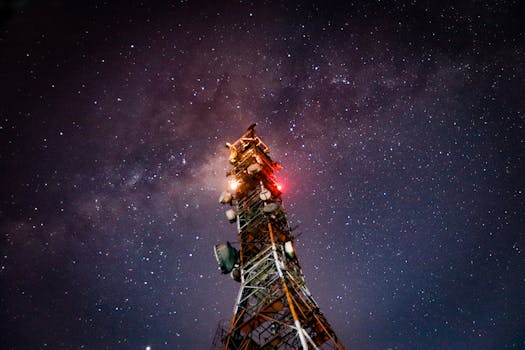
Starlink: Revolutionizing Global Internet Connectivity with Satellite Technology
Starlink is a cutting-edge satellite constellation developed by SpaceX, founded by Elon Musk, with the ambitious goal of providing high-speed, low-latency internet connectivity to the entire world. This innovative technology has the potential to bridge the digital divide, transform the way we communicate, and revolutionize the internet landscape.
What is Starlink?
Starlink is a network of low-Earth orbit (LEO) satellites designed to provide fast and reliable internet connectivity to remote and underserved communities, as well as to areas with limited or no existing internet infrastructure. The constellation consists of thousands of small satellites, each weighing around 260 kilograms, which are launched into orbit using SpaceX’s Falcon 9 rocket. The satellites are equipped with advanced technology, including Hall effect thrusters, Starlink-specific antennas, and a sophisticated beamforming system, allowing them to communicate with each other and with ground stations.
How Does Starlink Work?
The Starlink system operates on the principle of beamforming, where the satellites use phased arrays to steer and shape their beams, allowing them to communicate with specific areas on the ground. The satellites are designed to work in tandem, relaying data between each other and with ground stations, which then connect to the global internet backbone. This enables the system to provide high-speed internet connectivity with latency as low as 20 milliseconds, comparable to fiber-optic networks.
Benefits and Applications of Starlink
Starlink has numerous benefits and applications, including:
The ability to provide internet connectivity to remote and underserved communities, bridging the digital divide and enabling access to information, education, and economic opportunities.
The potential to transform the way we communicate, enabling real-time video conferencing, online gaming, and streaming services in areas with limited or no existing internet infrastructure.
The capacity to support a wide range of applications, including IoT (Internet of Things), smart cities, and precision agriculture, which rely on high-speed, low-latency internet connectivity.
Challenges and Future Developments
While Starlink has made significant progress, there are still challenges to be addressed, including:
Regulatory hurdles, as the deployment of satellite constellations is subject to strict regulations and licensing requirements.
Interference with other satellite systems and radio frequencies, which can impact the performance and reliability of the Starlink network.
The need for ongoing investment and development, as the Starlink system requires continuous upgrading and expansion to meet growing demand and evolving user needs.



